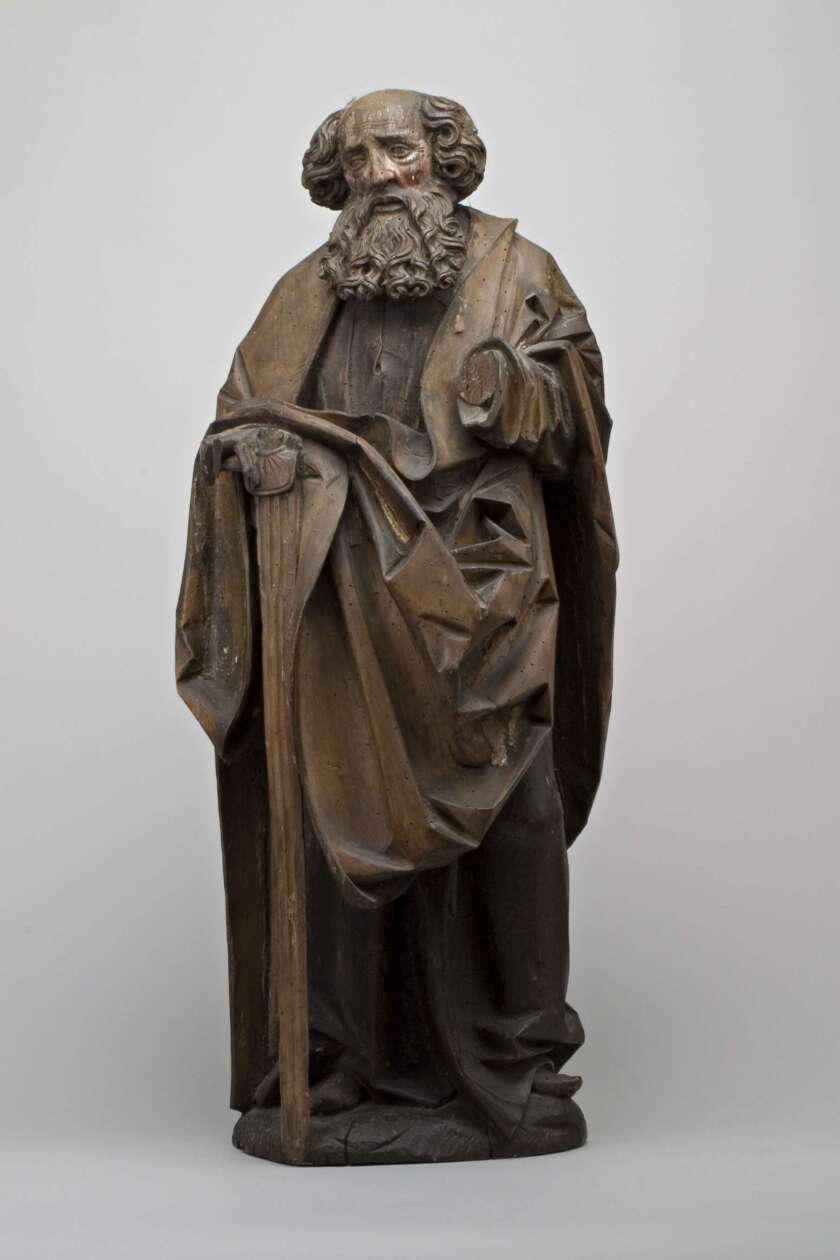The Renaissance was a time of renewed interest in the value and potential of the individual. Artists of the late-fifteenth and sixteenth centuries began to observe more true-to-life details of the natural world around them and include them in their artistic depictions. Look at Ghirlandaio’s Madonna and Child, Veit Stoss’ Saint Paul, and Lucas Cranach’s Fall and Redemption of Man and see if you can identify evidence of this transition.
School of Lucas Cranach (1472–1553) Fall and Redemption of Man
Gift by Karel Waterman

Workshop of Viet Stoss (1450-1533) Saint Paul
Purchase/gift of Gloria Teichert with funds provided by Jack R. and Mary Lois Wheatley

YOU MAY NOTICE
Human figures appear to have real weight and form. Medieval art often sought elongated forms and ambiguous space as a way to make religious scenes appear heavenly and otherworldly. Renaissance artists became interested in creating art from true-to-life observation.
The clothing that drapes the figures falls in thick folds and reflects the style of ancient Roman togas. At this time, the increased interest in the classical ages of Greek and Rome caused artists to often imitate this manner of dress in their artwork.
Artists of this period are trying to create the illusion of 3-dimensional space that appears like a “window on the world.” Linear perspective implements a vanishing point and orthogonal lines that show figures closer to the viewer as larger and figures farther away from the viewer as smaller. Atmospheric perspective imitates the process of the human eye that perceives objects in the distance as less focused, with a greying of colors as the landscape extends increasingly farther from the viewer.
Portraying a human body that has real muscles required anatomical research and an increased awareness of the physiology of man. The human body had long been associated with man’s fallen and carnal state and was viewed as the unwanted scourge of mortality. However, as the humanists began to champion the noble intellectual and moral potential of mankind, the human body came to symbolize all that man could become and accomplish. Lucas Cranach’s Fall and Redemption of Man demonstrates this initial attempt to portray the body naturally, though there is still some awkwardness with the segmentation of the human form.
